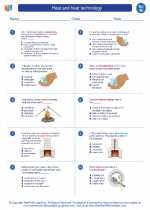Membrane Potential
The membrane potential is the difference in electric potential between the interior and exterior of a cell membrane. This difference in charge is essential for many physiological processes, including the transmission of nerve impulses and the movement of ions across cell membranes. The membrane potential is maintained by the unequal distribution of ions across the membrane and the selective permeability of the membrane to specific ions.
Factors Influencing Membrane Potential
- Ion Concentration Gradients: The concentration of ions such as sodium (Na+), potassium (K+), chloride (Cl-), and calcium (Ca2+) inside and outside the cell affects the membrane potential.
- Ion Permeability: The membrane's permeability to different ions, determined by ion channels and pumps, also influences the membrane potential.
Resting Membrane Potential
At rest, the inside of a cell is more negatively charged compared to the outside. This is typically around -70 millivolts (mV) in neurons. The resting membrane potential is largely determined by the concentration gradients and selective permeability of the cell membrane to ions such as potassium and sodium.
Action Potential
When a cell is stimulated, it can undergo a change in its membrane potential called an action potential. This involves a rapid depolarization (increase in positive charge) followed by repolarization (return to resting potential) of the membrane potential. Action potentials are crucial for nerve cell communication and muscle contractions.
Role in Nerve Impulse Transmission
Membrane potential plays a vital role in the transmission of nerve impulses. Action potentials travel along the length of a neuron, allowing for the rapid and precise communication between different parts of the nervous system.
Study Guide
Here are some key points to remember about membrane potential:
- Understand the concept of membrane potential and how it is maintained.
- Learn about the factors influencing membrane potential, including ion concentration gradients and ion permeability.
- Be able to explain the resting membrane potential and its significance.
- Understand the process of action potential and its role in nerve impulse transmission.
- Be familiar with the importance of membrane potential in physiological processes.
◂Science Worksheets and Study Guides Eighth Grade. Heat and heat technology

 Worksheet/Answer key
Worksheet/Answer key
 Worksheet/Answer key
Worksheet/Answer key
 Worksheet/Answer key
Worksheet/Answer key
 Vocabulary/Answer key
Vocabulary/Answer key
